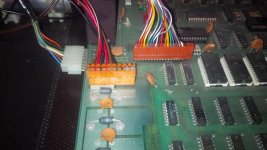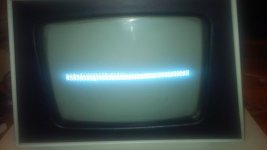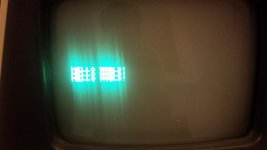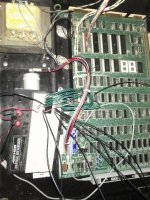snuci
Veteran Member
I recently acquired a PET 2001-8 with the fuse holder missing. The seller didn't know much about the machine (it was her brothers who left it in her basement) so I took a shot at it. I finally found a fuse holder (not similar to any other computer or PET I had) and fired it up. Below is a picture of the output. When the monitor fired up, it sounded like the degauss sound of a Sony monitor. I have another PET 2001-8 and I don't remember it doing that. The screen actually looks like it might be correct in terms of character place holders (with odd characters replacing them) and even has a flashing cursor but typing anything in does not move the cursor.
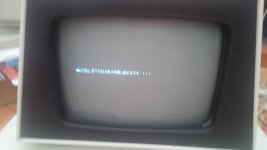
Anyhow, the motherboard is a 320008 and I'd rather not mess with it until I have to. I have not reseated the chips as of yet. As I mentioned, I have another PET 2001-8 that has a 320137 motherboard. For troubleshooting purposes, can I swap motherboards and see if the older board works in the newer case and vice-versa? I don't think it should be a problem but I want to be sure. The power connector on J8 is slightly different and has an extra cable that doesn't appear to be connected on the working PET (it's odd and has a different longer connector). If so, I'll do it this weekend and see what happens.
I did some searching and couldn't find a similar issue. I also played with the vertical adjustment pot in the back of the monitor but that just moved what is displayed up and down. Any help is appreciated.

Anyhow, the motherboard is a 320008 and I'd rather not mess with it until I have to. I have not reseated the chips as of yet. As I mentioned, I have another PET 2001-8 that has a 320137 motherboard. For troubleshooting purposes, can I swap motherboards and see if the older board works in the newer case and vice-versa? I don't think it should be a problem but I want to be sure. The power connector on J8 is slightly different and has an extra cable that doesn't appear to be connected on the working PET (it's odd and has a different longer connector). If so, I'll do it this weekend and see what happens.
I did some searching and couldn't find a similar issue. I also played with the vertical adjustment pot in the back of the monitor but that just moved what is displayed up and down. Any help is appreciated.

